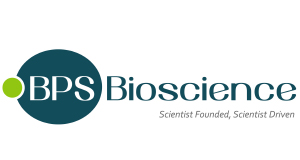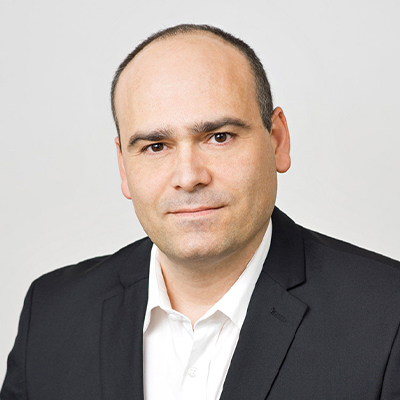TRα-GAL4 Luciferase Reporter HEK293 Cell Line (Thyroid Hormone Receptor α Pathway)
TRα-GAL4 Luciferase Reporter HEK293 Cell Line (Thyroid Hormone Receptor α Pathway)
Artikelnummer
BPS82633
Verpackungseinheit
2 vials
Hersteller
BPS Bioscience
Verfügbarkeit:
wird geladen...
Preis wird geladen...
Products from BPS Bioscience require a minimum order value above 400€
Application: Screen for TRα agonists
Background: Thyroid hormones are essential for regulating metabolism and overall growth and development in the body. These hormones act by way of nuclear receptors, TRα and TRβ, encoded by genes THRA and THRB respectively. Thyroid hormone receptors act as ligand dependent transcription factors regulating the production of target genes via interactions with co-activators, co-repressors, as well as other general transcription factors. Differentially expressed in the human body, TRα is widely expressed in the central nervous system, heart, skeletal muscle, and gastrointestinal tract whereas TRβ is expressed in the liver, kidney, pituitary, and hypothalamus. Studies have identified various mutations in the THRA gene to be correlated with resistance to thyroid hormone alpha and tissue-specific hypothyroidism.
Description: The TRα-GAL4 Luciferase Reporter HEK293 Cell Line is a HEK293 cell line expressing firefly luciferase under the control of the GAL4 upstream activation sequence (UAS) with constitutive expression of human thyroid receptor α ligand binding domain fused to the DNA binding domain (DBD) of GAL4 (GAL4 DBD). This system allows specific detection of thyroid hormone-induced activation of the thyroid receptor α with low cross-reactivity from other nuclear receptors.This cell line has been validated by stimulation with triiodothyronine (T-3).
Host Cell Line: HEK293, Human Embryonic Kidney, epithelial-like cells, adherent
Mycoplasma Testing: The cell line has been screened to confirm the absence of Mycoplasma species.
Storage Stability: Each vial contains ˃1 x 106 cells in 1 ml of Cell Freezing Medium (BPS Bioscience #79796)
Warnings: Avoid freeze/thaw cycles.
Biosafety Level: BSL-2
Transfection Method: Lipid Transfection/Lentivirus
References: Bochukova E., et al., 2012 New England Journal of Medicine 366(3): 243-249.Moran C., et al., 2015 Best Pract Res Clin Endocrinol Metab 29(4):647-57.
Application: Screen for TRα agonists
Background: Thyroid hormones are essential for regulating metabolism and overall growth and development in the body. These hormones act by way of nuclear receptors, TRα and TRβ, encoded by genes THRA and THRB respectively. Thyroid hormone receptors act as ligand dependent transcription factors regulating the production of target genes via interactions with co-activators, co-repressors, as well as other general transcription factors. Differentially expressed in the human body, TRα is widely expressed in the central nervous system, heart, skeletal muscle, and gastrointestinal tract whereas TRβ is expressed in the liver, kidney, pituitary, and hypothalamus. Studies have identified various mutations in the THRA gene to be correlated with resistance to thyroid hormone alpha and tissue-specific hypothyroidism.
Description: The TRα-GAL4 Luciferase Reporter HEK293 Cell Line is a HEK293 cell line expressing firefly luciferase under the control of the GAL4 upstream activation sequence (UAS) with constitutive expression of human thyroid receptor α ligand binding domain fused to the DNA binding domain (DBD) of GAL4 (GAL4 DBD). This system allows specific detection of thyroid hormone-induced activation of the thyroid receptor α with low cross-reactivity from other nuclear receptors.This cell line has been validated by stimulation with triiodothyronine (T-3).
Host Cell Line: HEK293, Human Embryonic Kidney, epithelial-like cells, adherent
Mycoplasma Testing: The cell line has been screened to confirm the absence of Mycoplasma species.
Storage Stability: Each vial contains ˃1 x 106 cells in 1 ml of Cell Freezing Medium (BPS Bioscience #79796)
Warnings: Avoid freeze/thaw cycles.
Biosafety Level: BSL-2
Transfection Method: Lipid Transfection/Lentivirus
References: Bochukova E., et al., 2012 New England Journal of Medicine 366(3): 243-249.Moran C., et al., 2015 Best Pract Res Clin Endocrinol Metab 29(4):647-57.
| Artikelnummer | BPS82633 |
|---|---|
| Hersteller | BPS Bioscience |
| Hersteller Artikelnummer | 82633 |
| Verpackungseinheit | 2 vials |
| Mengeneinheit | PAK |
| Wirt | Human |
| Produktinformation (PDF) | Download |
| MSDS (PDF) |
|

 English
English






